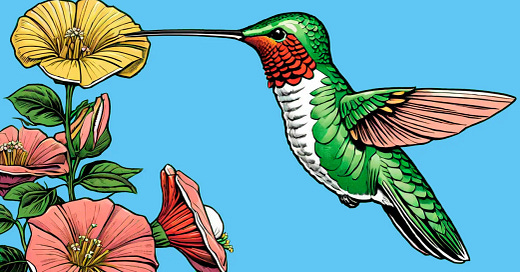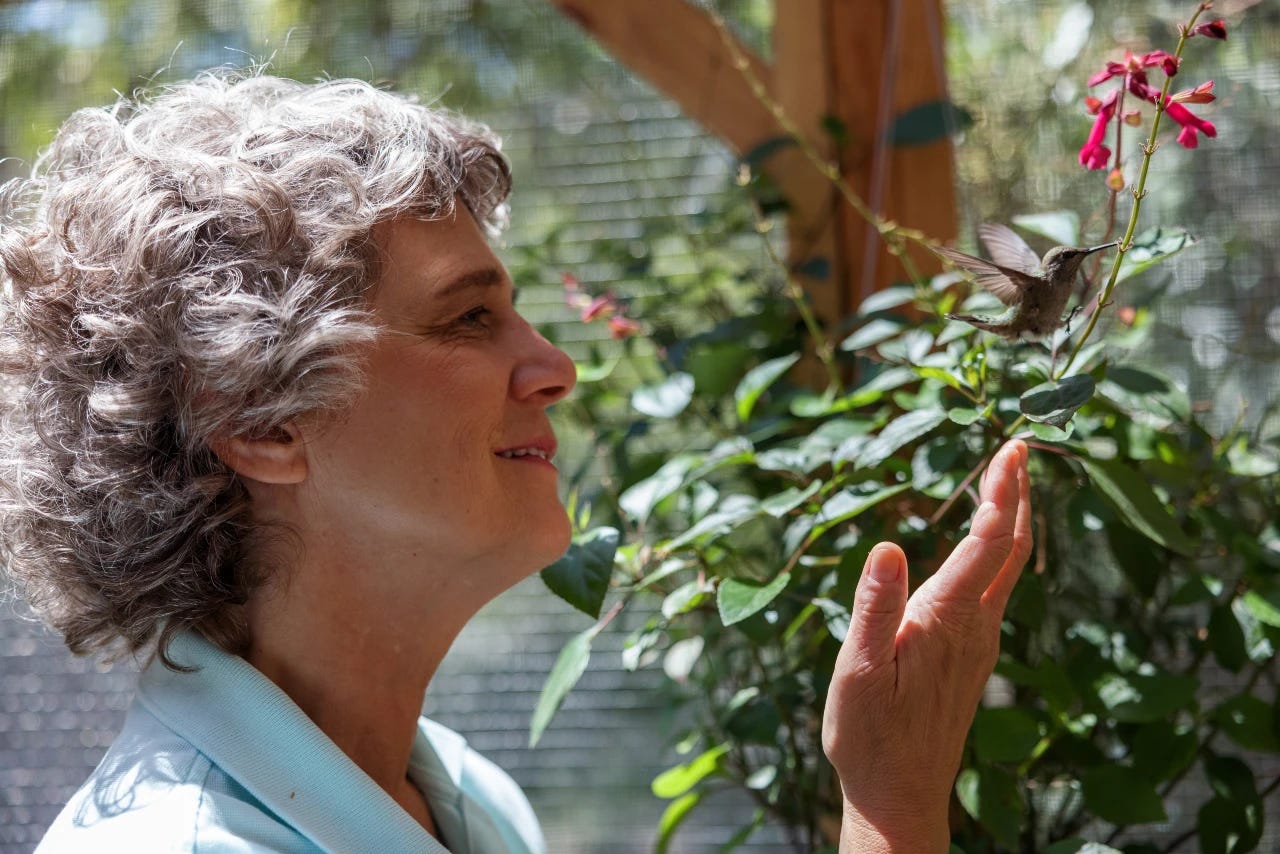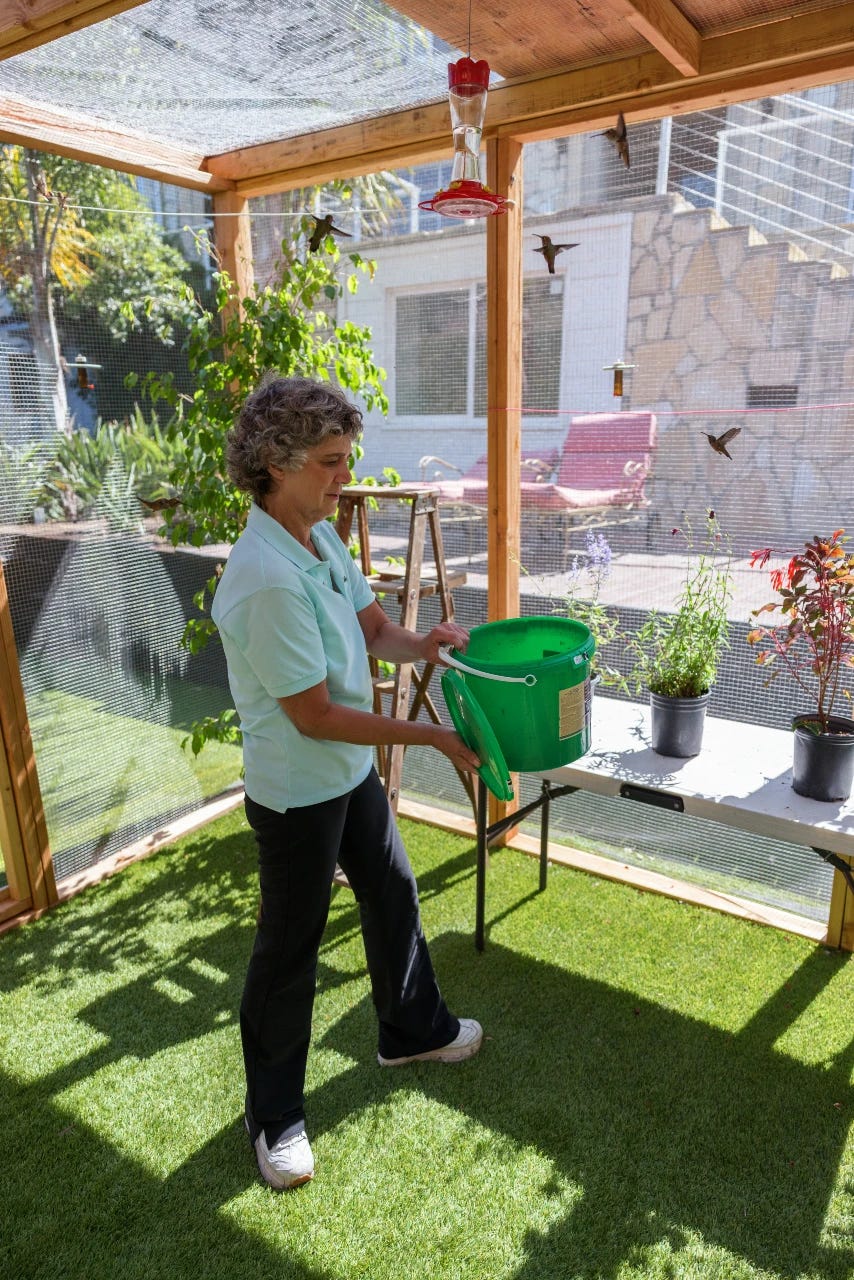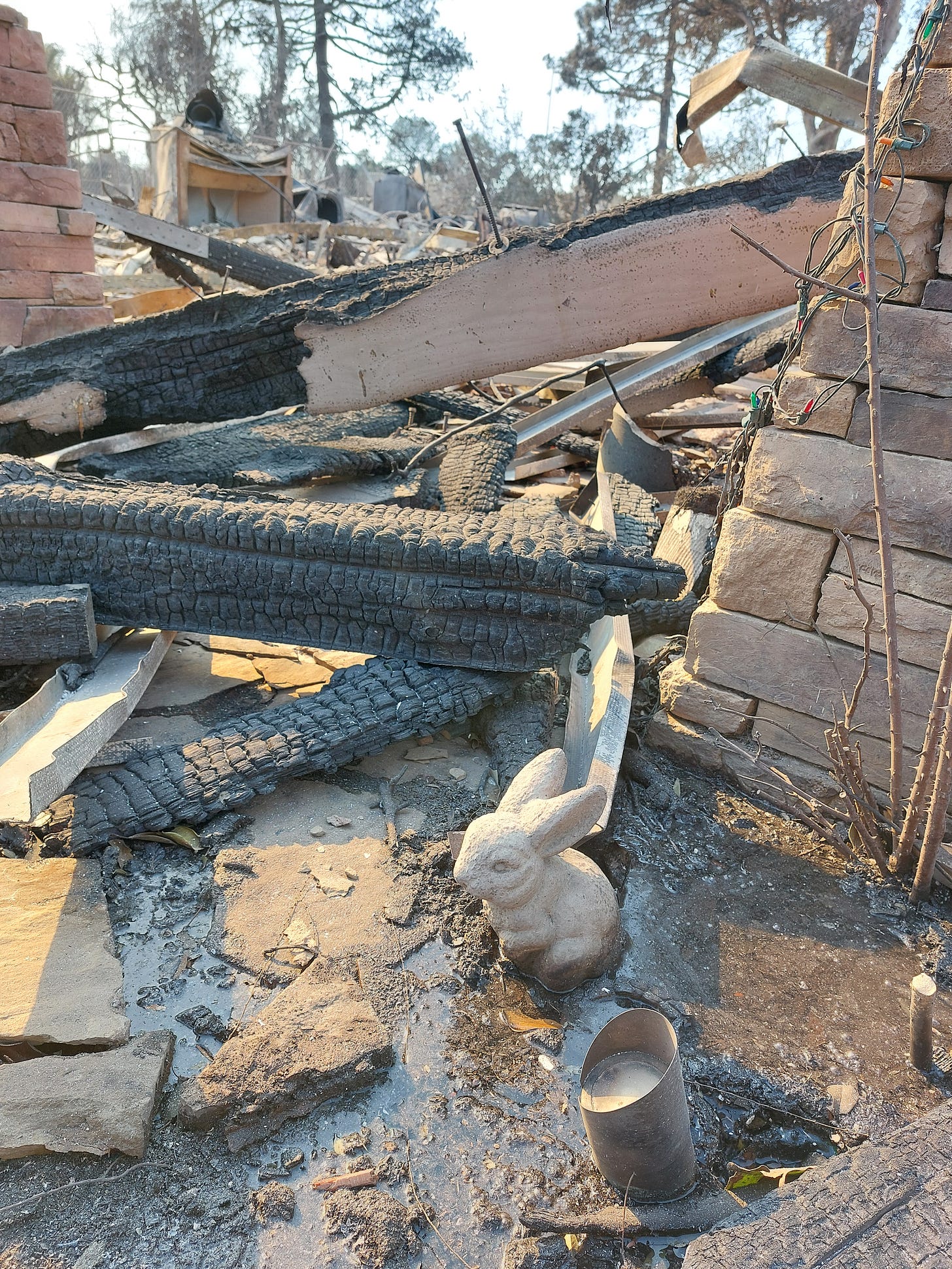This newsletter discusses hummingbirds in our gardens, yards, parks, and balconies, how to attract them, and offers feeding tips and advice.
Rescuing Hummingbirds with Terry
A new documentary called Every Little Thing tells the story of hummingbird rehabilitator Terry Masear, who started to care for injured birds and nestlings about 20 years ago in West Hollywood.
I recently talked to Terry on a video call about the film, rehabbing, hummingbirds in our gardens, and the devastating Palisades and Altadena fires in Los Angeles in January. I wanted to know how the fires affected hummingbirds.
“A lot of people are getting consumed by the fire, but I think they (hummingbirds) have a survival mechanism that's very, very sharp, and when they saw it coming, they got out. I think the birds are ok,” Terry says.
She got a lot of calls during and after the fires from Santa Monica, adjacent to Pacific Palisades.
People were wondering why they had so many hummingbirds around their feeders.
“For a hummingbird to fly from Palisades to Santa Monica, it's about a 3-minute trip. They are going to leave those (fire-ravaged) areas for a long time because there's nothing to eat, so they're going to move south,” she says.
Terry and one of the many rescued hummingbirds she has rehabilitated. Photo by Zach Ruddell.
Hummingbirds can see a flower or a feeder from a mile away, and they also crowded Culver City, including my garden, and Pasadena after the fires.
Terry advises people to put out fresh water for hummingbirds and other winged friends in the form of bubblers or fountains besides sugar water feeders.
Hummingbirds need shallow water fountains or bowls with uneven bottoms which they can grab with their feet which are not very strong. I have placed some small rocks on the bottom of my bird bath.
Now that there are more hummingbirds than normal sharing resources in a smaller area, it is also a good idea to start a hummingbird garden.
“People can plant salvia, Cape Honeysuckle, Lantana and other Hummingbird-friendly flowers.”
Like Little Ferraris
Rehabilitating hummingbirds sounds like one of the most exciting jobs I can think of. And one of the hardest. I learned this from Terry’s excellent book Fastest Things on Wings, in which she describes the long action-packed days of the rehabber.
“It's a very hard business, and first of all, you're a volunteer, so you get absolutely no money, and it is very difficult to do that in L.A. because it's such an expensive city to live in.”
Hummingbirds are also labor-intensive because of their feeding schedule. You can't go away and leave them for hours. Nestlings have to be hand-fed every 30 minutes.
“And there are no days off. It's every day for 4 or 5 months straight, and that's why people burn out. It takes a rare human to engage in that kind of selfless volunteer work,” Terry sighs.
A scene from the documentary. Terry feeds fruit flies to her “little Ferraris”. Photo by Zach Ruddell.
She says that it would be a perfect job for somebody who is independently wealthy, doesn't need to work, and has free time in their hands.
“You get up at 5:30 in the morning because they have to have food. Hummingbirds can't go very long without food because they have such an incredibly high metabolism. They are like little Ferraris.”
A generous donor is also needed to cover the rehabbing costs, from food to cages, syringes to phone bills—with or without a Ferrari.
Therapist for birds and humans
Relocated to Oregon, Terry has retired from the daily grind of caring for hummingbirds, which she did while teaching at UCLA. Instead, she consults people by phone on what to do if they have found an injured hummingbird or a fallen nestling.
Even phone consulting requires serious commitment.
“I get 5000 calls a year. I can save most of the birds over the phone because usually, many of them are babies that need to be re-nested. People cut them (the nests) down, knock them down, or they fly out. There are also trapped birds and birds that got grounded.”
Every situation is different, depending on the caller. It is as much working with humans as it is with the birds.
“Some callers are just losing it completely, and they go into a full-blown panic attack. Some are crying, some are too nervous, and you have to calm them down. You become a therapist basically before you can save the bird,” Terry laughs.
If she can't save the bird over the phone, she asks people to take the bird to Orange County or the California Wildlife Center in Calabasas. There are no rehabbers in Los Angeles at the moment.
Over half of the calls she gets are resolved over the phone.
“Many birds just have to go straight to a shelter because it's a broken wing or they're unsavable for other reasons.”
This ceramic bunny was one of the few things left on a property in Pacific Palisades on January 10, 2025. Photo: Johanna Juntunen
Fortunately, Terry did not get any calls about injured birds from the L.A. fires.
“I did get calls from injured birds from the Santa Ana winds, which I always do, and from auto strikes and window strikes because they get blown into things from the wind.”
Luckily, other bird species seemed to escape the flames unharmed as well.
To find out more about the documentary, buy Terry’s book, donate to her hummingbird rescue efforts, or call the hotline, visit Terry’s website:
https://www.losangeleshummingbirdrescue.org/
Thank you for reading! I will answer your questions in comments or via email. Let me know your thoughts on this issue or say hi.
Created by Johanna Juntunen
I am a biology graduate student in the Project Dragonfly Global Field Program (GFP) at Miami University. I am also a hummingbird enthusiast, a lifelong birder, and a journalist







